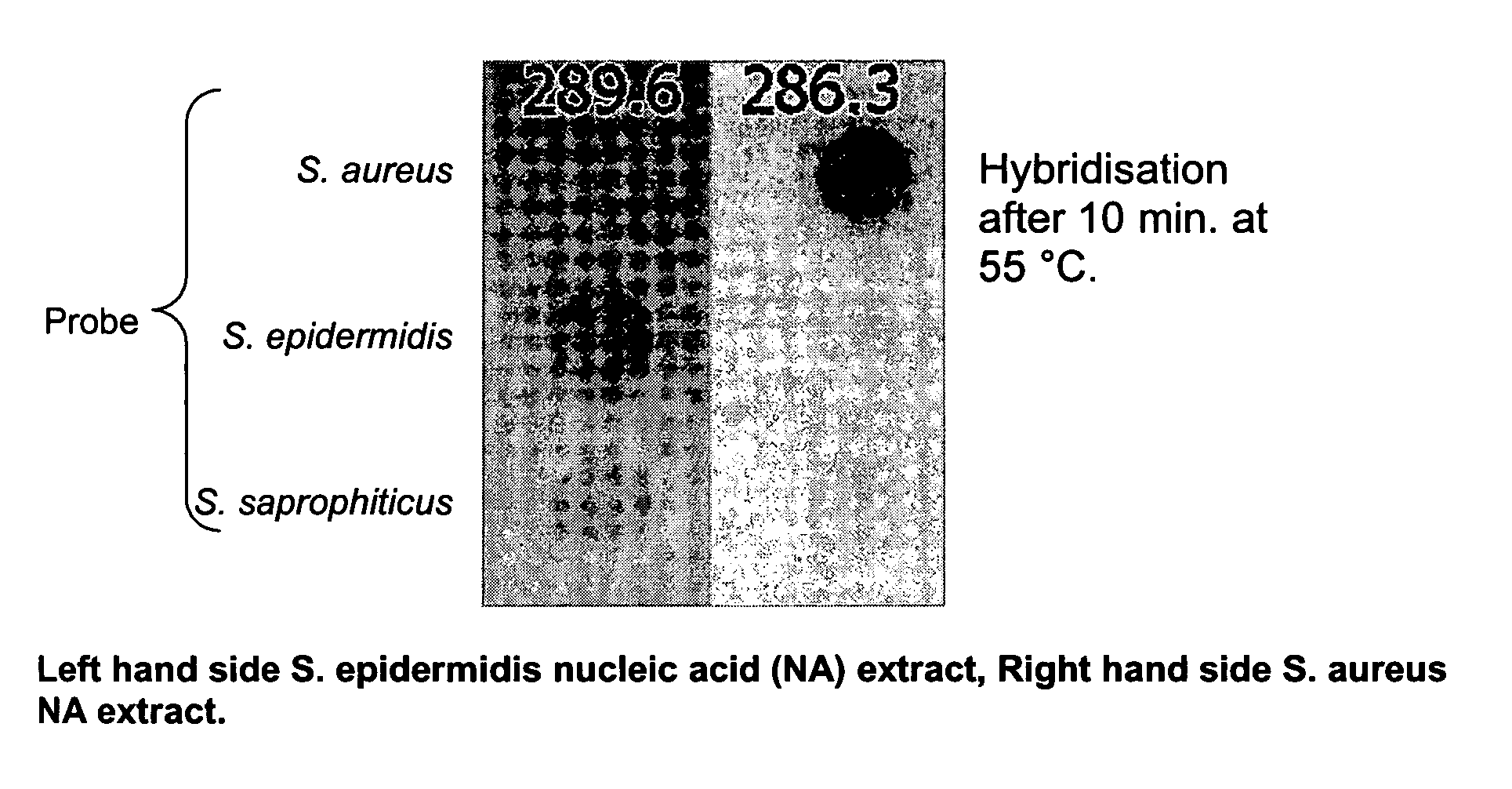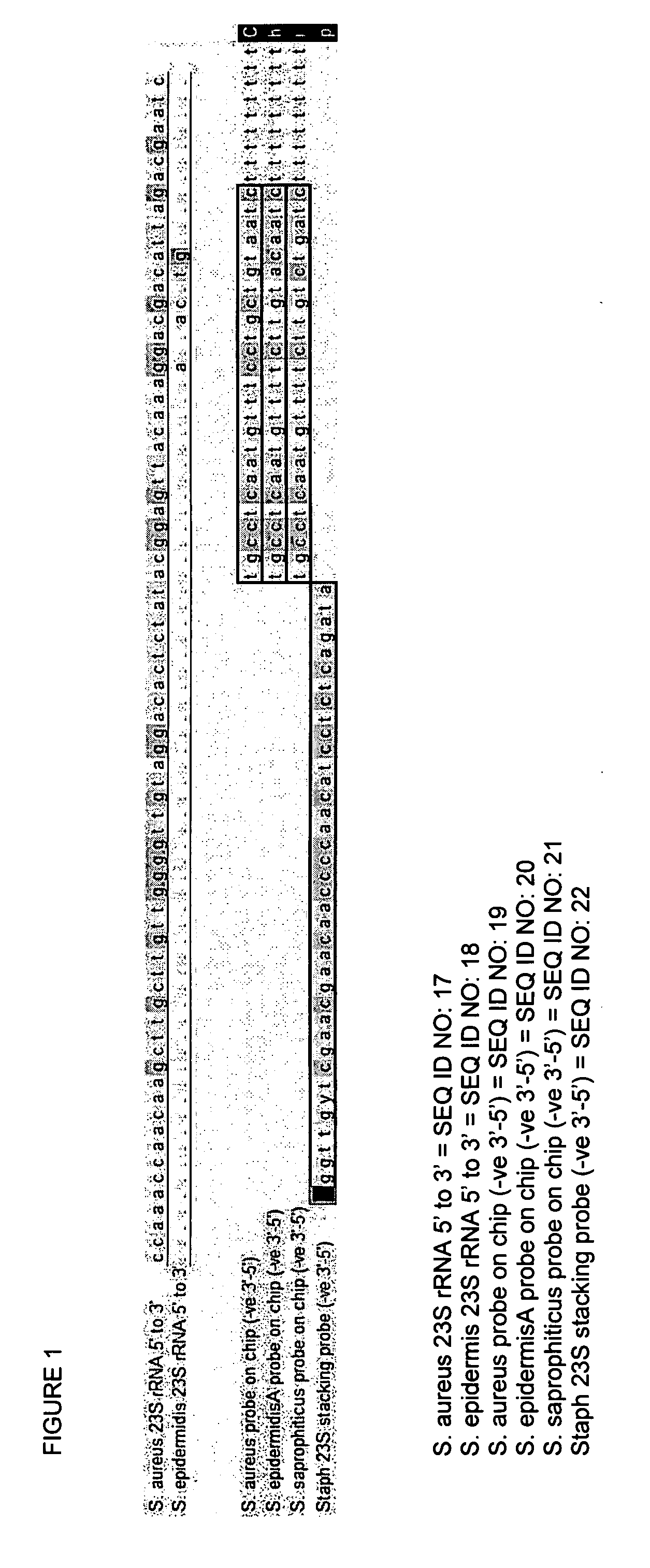Fast method for detecting micro-organisms in food samples
a microorganism and food sample technology, applied in the direction of material testing goods, biochemistry equipment and processes, instruments, etc., can solve the problems of detecting and identifying minute amounts of contaminating microorganisms, large monitoring costs, and notorious instability of rna
- Summary
- Abstract
- Description
- Claims
- Application Information
AI Technical Summary
Benefits of technology
Problems solved by technology
Method used
Image
Examples
example 1
Accumulation of Micro-Organisms from Liquids Using Microsieves
[0132] The Micro Analytical Screen (MAS) method of the present invention was elaborated and the performance of Aquamarijn microsieves on laboratory scale and three different pilot plants was examined. [0133] 1 In a dairy plant, depending of the dimensions of milk particles, a microsieve with a pore diameter of about 0.5-1.2 micron is applied. At a pressure of 10 mbar an averaged flux is measured of 2000 l / m2h (litres per m2 membrane surface area per hour). When the process of the present method is applied in the removal of micro-organisms in milk, the largest part of the casein in milk passes through the microsieve membrane and enters the permeate. In experiments with “spiked” skim milk (inoculated with different numbers of colony forming units (cfu's) of Bacillus subtilis) with a 0.5 micron microsieve we were able to collect and detect 1 cfu of Bacillus subtilis per litre milk. [0134] 2 In a beverages plant, depending o...
example 2
Isolation of Nucleic Acids from Samples
RNA Isolation
[0139] According to the need, the most appropriate procedure to isolate RNA is chosen. We are using and comparing various procedures to isolate total RNA from micro-organisms. The traditional procedure is the direct injection of bacterial samples into a hot phenol solution (Selinger et al., 2000, Nature Biotechnol. 18, 1262-1268). Alternatively, cells are quickly frozen in liquid nitrogen and mechanically broken before isolation with acid phenol solution.
[0140] The cells of Gram-positive organisms are frozen in dry-ice, thawed and sonicated 3 times for 10 sec with a microtip sonicator. The power is set at about 30 W. Lysis is indicated by a clear cell suspension.
[0141] The methods described above are convenient for isolating RNA.
[0142] Subsequently, we have tested the RNAlater® solution (Ambion and Qiagen). In particular, we have examined the permeability of RNAlater® for different microbial species, including Saccharomyces, ...
example 3
Design of an Universal Capture DNA Microarray
[0151] We have designed a set of 204 (20-mer) Zipcode DNA sequences (Gerry et al., 1999, J. Mol. Biol. 292: 251-262). All these Zipcodes have been blasted with help of: [0152] TIGR microbial database: www.tigr.orq / tdb / mdb / mdbcomplete.html, or with [0153] Genbank; www.ncbi.nlm.nih.gov. [0154] IECB University of Vienna: www.probebase.net.
[0155] In addition, all Zipcodes showing internal or external homologies, all Zipcodes falling outside the desired Tm range (60-72° C.) and Zipcodes which are difficult to synthesize e.g. a track of 5 or more dGTPs were excluded from further analysis.
[0156] The remaining 180 Zipcodes were synthesized and provided by the supplier Proligo (Paris, France), Eurogentec (Liege, Belgium), or Metabion (Martinsried, Germany).
[0157] Microarrays were prepared using PAM chips designed to covalently immobilize modified oligonucleotides as described in patent WO 99 / 02266.
[0158] Spotting the 180 modified Zipcode olig...
PUM
| Property | Measurement | Unit |
|---|---|---|
| pore size | aaaaa | aaaaa |
| pore size | aaaaa | aaaaa |
| pore size | aaaaa | aaaaa |
Abstract
Description
Claims
Application Information
 Login to View More
Login to View More - R&D
- Intellectual Property
- Life Sciences
- Materials
- Tech Scout
- Unparalleled Data Quality
- Higher Quality Content
- 60% Fewer Hallucinations
Browse by: Latest US Patents, China's latest patents, Technical Efficacy Thesaurus, Application Domain, Technology Topic, Popular Technical Reports.
© 2025 PatSnap. All rights reserved.Legal|Privacy policy|Modern Slavery Act Transparency Statement|Sitemap|About US| Contact US: help@patsnap.com



